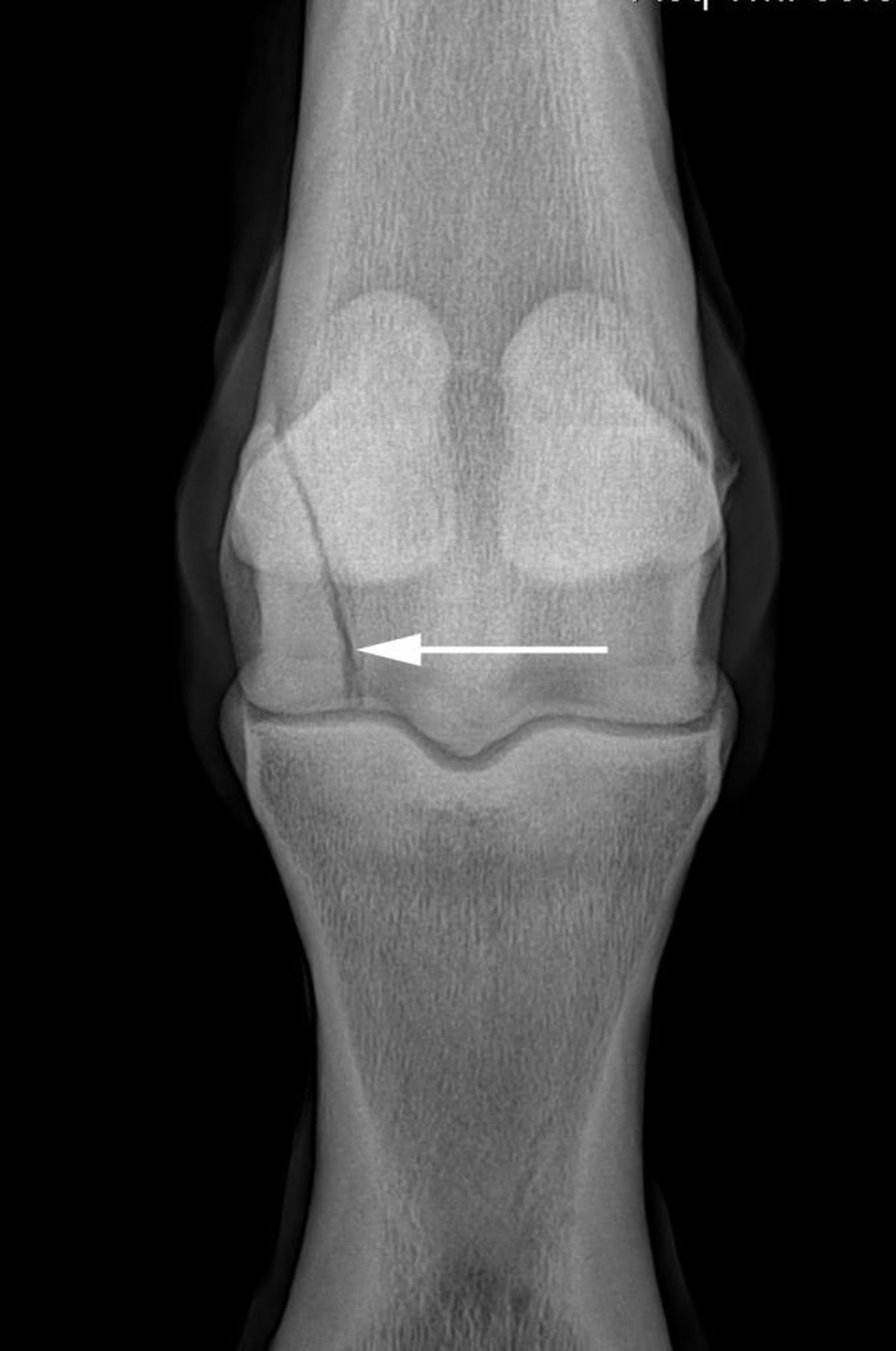Courtesy of Dr. Matthew T. Brokken.
The most common site of major fracture of the third metacarpal bone is in the distal articulation (condylar fractures). Vertical fractures in the sagittal plane of the distal cannon bone (condylar fractures) occur predominately in young racehorses. Most condylar fractures are in the lateral condyle. In Thoroughbreds, condylar fractures of the third metacarpus are at least twice as common as third metatarsal fractures, but in Standardbreds, the ratio of metacarpal to metatarsal fractures is nearly equal. Nearly all lateral condylar fractures originate from the mid to midaxial portion of the lateral condyle and traverse toward the lateral cortex. In contrast to medial condylar fractures, lateral condylar fractures rarely spiral into the diaphysis of the cannon bone. Medial condylar fractures nearly always extend toward the axial aspect of the cannon bone. Clinical signs are straightforward, with acute lameness after exercise (or race) with marked effusion in the fetlock joint. Radiographic examination should include a full series of the fetlock as well as a flexed dorsopalmar view. For medial fractures, complete examination of the entire cannon bone should be performed.
Lateral condylar fractures can be treated conservatively by casting, but the treatment of choice is compression of the fracture, with screws placed in lag fashion to minimize or avoid osteoarthritis. For medial condylar fractures, in addition to lag screw fixation distally, a plate is placed up the remaining metacarpus.
The most common major long bone fracture in horses is fracture of the diaphyseal cannon bone. Typically, these fractures result from trauma incurred while the horse is pastured with other horses. Open reduction and internal fixation is the preferred treatment choice, because the lack of soft-tissue coverage over an unstable fracture typically causes these types of fractures to become open when simply cast or with a coaptation splint.
